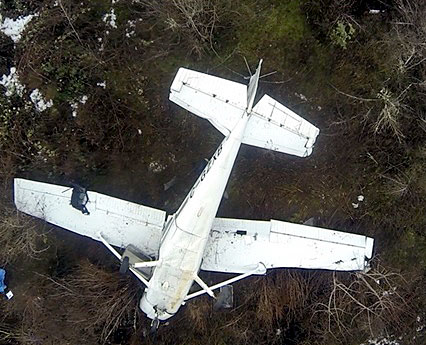Collision with trees and power lines after rejected landing
Victoria Flying Club
Cessna 172, C-GZXB
Duncan Aerodrome, British Columbia
The occurrence
On , a Victoria Flying Club Cessna 172 was conducting a training flight departing from Victoria Airport, British Columbia, with one student pilot and one instructor on board. During the flight, the aircraft struck power lines and crashed off the north end of Runway 31 at Duncan Airport, British Columbia. The instructor sustained serious injuries and the student pilot sustained minor injuries.
Media materials
News release
Operational factors and pilot decision-making contributed to 2017 collision with trees and power lines at Duncan Aerodrome, British Columbia
Read the news release
Deployment notice
TSB is deploying a team to the site of an aircraft accident in Duncan, British Columbia
Richmond, British Columbia, 19 January 2017 - The Transportation Safety Board of Canada (TSB) is deploying a team of investigators to the site of an aircraft accident that occurred near the Duncan airport in Duncan, British Columbia. The TSB will gather information and assess the occurrence.
Investigation information
Download high-resolution photos from the TSB Flickr page.
Class of investigation
This is a class 3 investigation. These investigations analyze a small number of safety issues, and may result in recommendations. Class 3 investigations are generally completed within 450 days. For more information, see the Policy on Occurrence Classification.
TSB investigation process
There are 3 phases to a TSB investigation
- Field phase: a team of investigators examines the occurrence site and wreckage, interviews witnesses and collects pertinent information.
- Examination and analysis phase: the TSB reviews pertinent records, tests components of the wreckage in the lab, determines the sequence of events and identifies safety deficiencies. When safety deficiencies are suspected or confirmed, the TSB advises the appropriate authority without waiting until publication of the final report.
- Report phase: a confidential draft report is approved by the Board and sent to persons and corporations who are directly concerned by the report. They then have the opportunity to dispute or correct information they believe to be incorrect. The Board considers all representations before approving the final report, which is subsequently released to the public.
For more information, see our Investigation process page.
The TSB is an independent agency that investigates air, marine, pipeline, and rail transportation occurrences. Its sole aim is the advancement of transportation safety. It is not the function of the Board to assign fault or determine civil or criminal liability.
